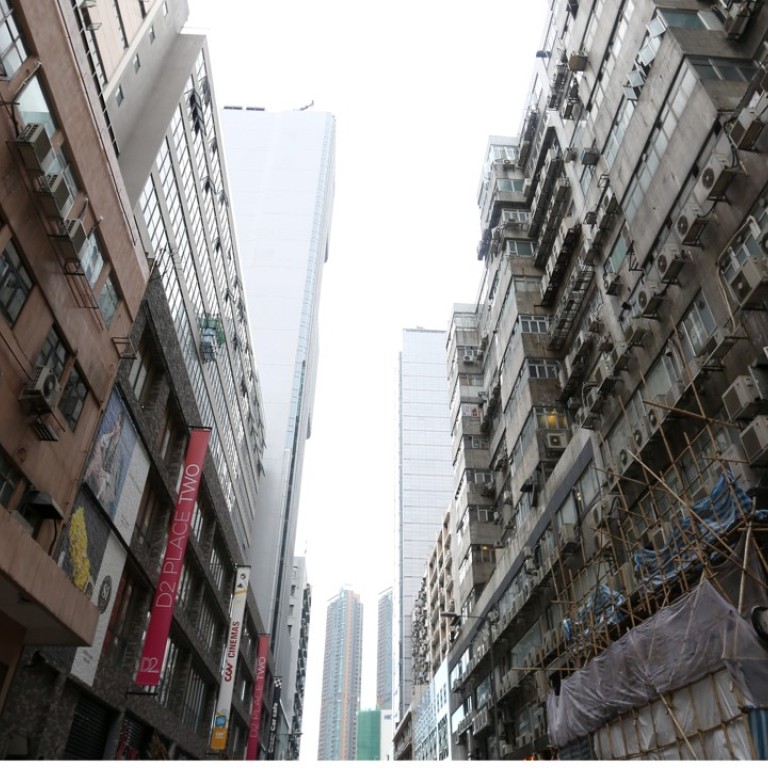
Can Hong Kong’s transitional housing scheme help Hongkongers own a home?
- Industrial buildings will be allowed to be converted into short-term housing for a maximum five years
The Hong Kong government announced in its policy address in October that a new industrial building revitalisation scheme will be launched. It will give the green light to the conversion of industrial buildings to transitional housing premises without requiring a waiver fee to be paid. On November 26, the Town Planning Board announced that transitional housing, coordinated by a task force under the Transport and Housing Bureau, will be allowed in wholesale-converted industrial buildings for no more than five years. The fixed and maximum 5-year term will be specified in the special waiver granted by the Lands Department.
The scheme also came with other constraints, including the compulsory recruitment of non-governmental organisations as intermediary and management team. The special waiver ends along with the expiry of rental agreement, and the application for transitional housing should be considered again on the date that it is resubmitted.
For transitional housing of no more than three years in rural areas, owners are still required to seek the Town Planning Board’s approval.
As with the Hong Kong Chief Executive Carrie Lam Cheng Yuet-ngor’s response in the question-and-answer session to the policy address, the spacious interior of industrial buildings can easily be converted to provide hundreds of housing units. The proposed policy will allow landlords to transform the entire or a portion of their buildings in the city’s Commercial, Comprehensive Development Areas (CDA), Other Specified Uses (Business) and Residential Zones for transitional housing use.
Apart from being exempted from waiver fees, the landlords will also be granted a temporary permit and exemption from the Town Planning Board applications. Permitting the change in use of multi-storey factory buildings will not only bolster the utilisation of land resources, but also help alleviate Hong Kong’s acute housing shortage problem.
However, transitional housing can be further extended to a housing ownership scheme. For example, in the UK, transitional housing developments can be divided into three categories: modular housing units, rental units reserved from private development and rent-to-buy units. The first two mainly focus on renting while the rent-to-buy option encourages and supports housing ownership.
The Chief Executive has reignited Hong Kong people’s aspiration towards purchasing homes. Consequently, why doesn’t the government take one step further – permit the redevelopment of industrial buildings in Commercial and CDA Zones for residential use?
The redeveloped buildings can be restricted to transitional housing use for a certain number of years. Upon the expiry of such transition periods, the landlords can sell these premises to the sitting tenants, allowing them to accomplish their dream of purchasing their own homes.
In the UK, households taking part in the rent-to-buy scheme rent their flats for a certain period of years at market rates, but low-income families can apply to the local authority for rental subsidies.
Not only will the transitional housing scheme provide incentives for industrial buildings’ owners, but it will also assist scores of families to achieve their dream of eventually owning a home
Notably, these households can purchase their own flats after the transitional period. The intention of the scheme is to enable families to get a taste of their future homes and have more time to save money for their down payments. Under the rent-to-buy scheme, landlords would provide a 10 per cent rebate of total rental instalments made by tenants if they buy the premises after the restriction period.
In Hong Kong, 2,000,000 people live in 800,000 public rental flats. We should continue to build more rental flats to sustain this major source of supply of public housing. Despite the relative immobility of public housing tenants, they also qualify as the so-called green form applicants to purchase discounted Home Ownership Scheme flats.
Although the details of new industrial building revitalisation scheme are not announced yet, it would be illogical to require landlords to renovate their property for inexpensive transitional housing renting in the long run. But landlords, to relieve them of the constraints in the foreseeable future, should be allowed to resell their flats to the existing households after the transitional period. Not only will the transitional housing scheme provide incentives for industrial buildings’ owners, but it will also assist scores of families to achieve their dream of eventually owning a home.
Chiu Kam-kuen, is the head of valuation and advisory services for Asia-Pacific at Cushman & Wakefield

